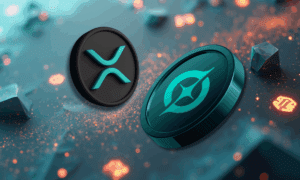There is no denying that the cryptocurrency market really came on its own in 2024. Bolstered by the promise of a favorable regulatory environment and the potential inclusion of Bitcoin as a strategic asset going forward, the demand for Layer 1 (L1) blockchains has surged as it serves the foundational base for businesses that want to work with dApps and Smart Contracts. As a result, new L1 solutions have flooded the market, each with their own set of unique strengths in terms of scalability, decentralization, and more fluid UX.
Although these face steep competition from a rising number of L2 solutions banking on enhanced interoperability (such as built-in bridges to Ethereum for better efficiency and security), better scalability, transaction speeds etc., as well as other L1 solutions, the intensifying competition in space could very well prove a boon for innovation. L1 solutions remain foundational to momentum shift in pushing the decentralized paradigm forward.
Newer L1 solutions often arise as a response to specific real-world challenges, and offer specialized solutions attuned to user needs. New L1 blockchains not only offer better throughput and lower transaction costs, but also more advanced privacy and security features. It’s going to be an uphill battle for any L1 blockchain to gain market traction without offering significant value over and above its peers in the trifecta of scalability, security, and decentralization. The onus is now on older, more established blockchains to figure out a way to beat congestion and high fees to retain users on the chain. So, without further ado, here’s our curated list of Top 4 Foundational Layer-1 Blockchains to Watch Out for in 2025.
Manta (MANTA)
If we want to talk about specialized blockchains, Manta’s multi-modular ecosystem gained attention in 2024 with 10.6 million recorded transactions, 720,000 wallet addresses and a unique industry-first approach to scalability with a modular ecosystem. Manta specializes in providing a specific function and all other tasks are outsourced to other chains.
Manta has two layers:
Manta Atlantic: Fastest zero-knowledge (ZK) L1-chain on Polkadot with programmable identities and credentials (admittedly a small portion of Manta’s revenue, but a center for staking and emission distribution)
Manta Pacific: Unique EVM-native L2-chain for ZK applications that adopts a modular approach for scalability and cost-effectiveness. Manta Pacific also leverages a hybrid rollup scaling system combining both OP-Stack for scalability and ZK-rollups (like Metis, but with a larger TVL).
Mantra (OM)
Mantra has had a fantastic year in 2024. According to CoinGecko, its price jumped by an eye-watering 7035.2%. Mantra owes its burgeoning popularity to a growing demand for real-world asset (RWA) tokenization expected to surpass $30 trillion by 2030 as traditional financial institutions look to offer their solutions on blockchain. Mantra has secured strategic partnerships with UAE real estate giant MAG and Zand Bank and operates in compliance with Dubai’s Virtual Asset Regulatory Authority (VARA). The permissionless chain also managed to secure Google Cloud as a validator in perhaps an equally stellar feat.
Redbelly (RBNT)
Redbelly holds a lot of firsts. It was the first formally verified and patented blockchain and was the first blockchain specifically designed for the world of traditional, regulated finance rather than crypto. It offers in-built compliance and verifiable credential mechanisms (zero-knowledge proofs). Redbelly was developed jointly by the University of Sydney, CSIRO’s Data 61 (the Australian National Science Agency), and Block8 (venture studio) and claims to offer a fork-proof blockchain for real-world asset registry and native deployment on the chain.
Redbelly is focused on providing transparent, secure, scalable and accountable processes for real world asset tokenization with the simplicity of Web2, fixed transaction costs and certified data. Redbelly claims to prevent double spending and fraud even when the network is under duress and has a tested throughput of 15,000 transactions per second (TPS).
KALP (GINI)
KALP is a unique permissioned cross-chain network intended for secure and compliant real-world asset tokenization that allows users to transact seamlessly across assets and chains. KALP specializes in building an ecosystem of partners, developers and users involved in RWA tokenization across asset classes and jurisdictions. It’s unique in offering users cross-chain liquidity across all major blockchain networks for simplified real-world transactions and use cases. This is made possible through state-of-the-art cryptographic algorithms, address whitelisting mechanisms, smart contract interfaces and secure cross-chain interactions for everything from asset transfer and smart contract invocation to data sharing and verification across blockchain boundaries.
This, in turn, has the effect of making previously illiquid and high-ticket real-world assets available to a much larger demographic of users beyond institutional players with fractional ownership. Each transaction is backed by the highest standards of legal compliance, transparency and a network designed for optimum resource allocation to maximize throughput. KALP is designed to service broad-spectrum security and regulatory environments, enforces strict KYC (Know Your Customer) and KYB (Know Your Business) compliance protocols and offers both self-custody and third-party custodian wallets.





























